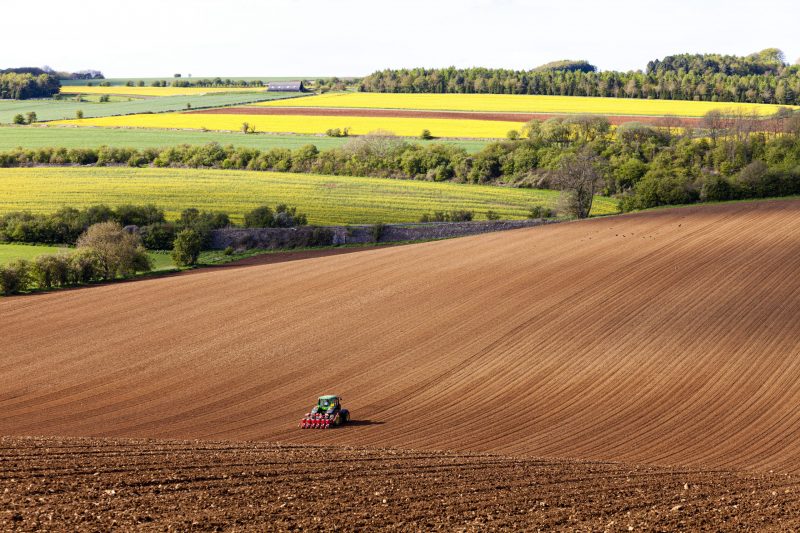In modern farming, precision agriculture irrigation has emerged as a game-changing approach to sustainable water management. With increasing environmental concerns and the growing demand for food, adopting technology-driven irrigation techniques has become essential. This blog explores the principles, benefits, and technologies behind precision agriculture irrigation and why it’s critical for the future of farming.
What is Precision Agriculture Irrigation?
Precision agriculture irrigation is an advanced farming technique that uses technology to deliver water to crops in the most efficient and precise way possible. It incorporates tools like sensors, GPS mapping, and automated systems to ensure water reaches where it’s needed most, reducing waste and maximising crop productivity.
By targeting irrigation to specific areas and tailoring water delivery to the needs of individual crops, farmers can optimise water use while maintaining or even improving yields.
Key Technologies in Precision Agriculture Irrigation
1. Soil Moisture Sensors
Soil moisture sensors measure the water content in the soil in real time. These devices help farmers determine exactly when and how much to irrigate, ensuring crops receive adequate water without overwatering.
2. Drip Irrigation Systems
Drip irrigation delivers water directly to the root zone of plants through a network of tubes and emitters. This method reduces evaporation and water runoff, making it highly efficient for water conservation.
3. IoT-Enabled Irrigation Systems
The Internet of Things (IoT) plays a significant role in modern precision irrigation. IoT-enabled systems collect and analyse data from sensors, weather forecasts, and satellite imagery to automate irrigation schedules.
4. GPS Mapping and Variable Rate Irrigation (VRI)
GPS and VRI technologies allow farmers to map their fields and apply water at variable rates based on soil type, topography, and crop needs. This tailored approach eliminates over-irrigation in areas that don’t require as much water.
5. Smart Irrigation Controllers
Smart controllers use data from weather stations and sensors to adjust irrigation schedules dynamically. These systems ensure efficient water use even during changing weather conditions.
Benefits of Precision Agriculture Irrigation
1. Water Conservation
Precision irrigation techniques significantly reduce water waste by delivering water directly to the areas that need it. This conservation is critical in regions facing water scarcity.
2. Enhanced Crop Yield
By providing crops with the optimal amount of water, precision irrigation ensures healthier plants and higher yields, even during drought conditions.
3. Cost Efficiency
Precision systems help farmers save on water and energy costs. Over time, these savings can offset the initial investment in advanced irrigation technologies.
4. Reduced Environmental Impact
By minimising runoff and overwatering, precision irrigation prevents water pollution and soil erosion. It also contributes to sustainable farming practices that benefit the environment.
5. Improved Fertiliser Use
Many precision irrigation systems can integrate with fertigation techniques, delivering nutrients directly to crops along with water. This ensures that plants receive nutrients efficiently and reduces fertiliser waste.
Challenges of Implementing Precision Agriculture Irrigation
1. High Initial Costs
Advanced irrigation systems can be expensive to install, which may deter small-scale farmers. However, the long-term benefits often outweigh the upfront costs.
2. Technical Knowledge Requirements
Farmers must understand how to operate and maintain complex irrigation technologies. Training and support are essential to maximising the potential of these systems.
3. Infrastructure Limitations
In regions with limited access to water or electricity, implementing precision irrigation systems can be challenging. Developing infrastructure is crucial to expanding these technologies.
Future Trends in Precision Agriculture Irrigation
1. Artificial Intelligence (AI) Integration
AI-powered tools can analyse data from multiple sources to predict irrigation needs accurately. This technology will further enhance efficiency and decision-making.
2. Renewable Energy-Powered Systems
Solar-powered pumps and controllers are making precision irrigation more accessible in remote areas. These systems reduce dependency on non-renewable energy sources.
3. Blockchain for Water Management
Blockchain technology could improve transparency and accountability in water usage, helping farmers manage resources more responsibly.
Precision Agriculture Irrigation – Final Thoughts
Precision agriculture irrigation is transforming farming by enabling more efficient water use, improving yields, and supporting sustainable practices. With advancements in technology and increased accessibility, it offers a promising solution to the challenges of modern agriculture. By adopting precision irrigation, farmers can ensure a balance between productivity and environmental stewardship.
Are you looking to incorporate precision farming in your farm? Contact Arvorum today.
FAQs
What makes precision agriculture irrigation sustainable?
Precision irrigation uses technology to minimise water waste, optimise resource use, and prevent environmental degradation, making it a sustainable farming practice.
How does precision irrigation improve crop yields?
By delivering water directly to crops based on their specific needs, precision irrigation ensures optimal growth conditions, leading to healthier plants and higher yields.
What are the costs associated with precision irrigation?
While the initial setup costs can be high, the savings in water, energy, and improved yields often make precision irrigation a cost-effective solution over time.
Can small-scale farmers adopt precision agriculture irrigation?
Yes, many low-cost options, such as mobile-based irrigation monitoring systems, are now available, making precision irrigation accessible to small-scale farmers.
What role does data play in precision irrigation?
Data collected from sensors, weather forecasts, and satellite imagery helps farmers make informed decisions about when and how to irrigate, improving efficiency and outcomes.
Are there any government incentives for adopting precision irrigation?
Many countries offer subsidies or financial assistance for farmers investing in water-saving technologies. Check with local agricultural departments for specific programs.







